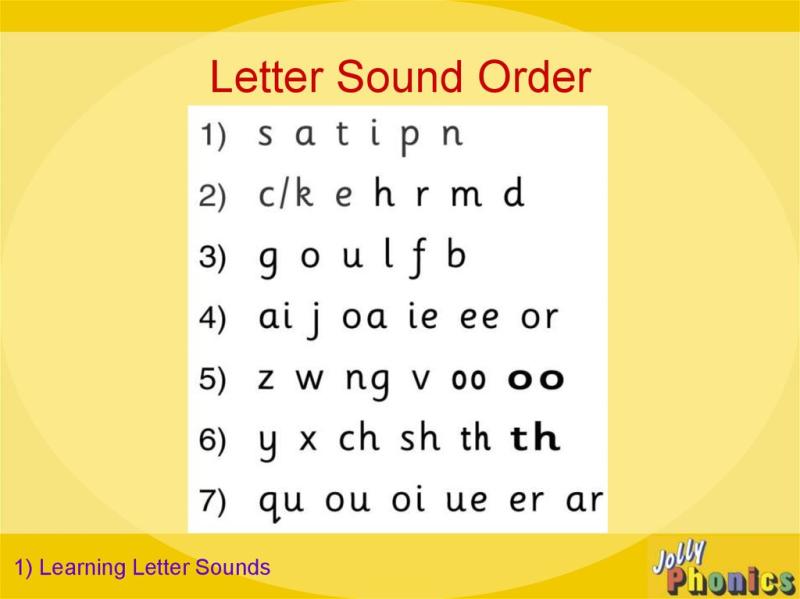What order do you teach phonics?
The order in which phonics is taught often follows a systematic and sequential approach. Here is a general guideline for the teaching order of phonics, although it's important to note that variations may exist based on specific phonics programs and individual student needs:
Consonant Sounds:
- Start by introducing individual consonant sounds. Teach the most common consonants first, including both the letter name and its sound. For example, begin with /m/, /s/, /t/, /p/, and /c/.
Short Vowel Sounds:
- Introduce short vowel sounds after consonants. Teach the short vowel sounds associated with the letters a, e, i, o, and u. Focus on simple, three-letter words that include short vowel sounds, such as "cat," "pen," and "big."
Consonant Blends:
- Move on to consonant blends, where two or three consonants appear together in a word. Examples include "bl," "br," "st," and "sp."
Digraphs:
- Introduce digraphs, which are two letters that represent a single sound. Common digraphs include "th," "sh," "ch," and "wh."
Long Vowel Sounds:
- Teach long vowel sounds, emphasizing that they are the same vowels as in the short vowel sounds but pronounced differently. For example, introduce long vowel sounds in words like "cake," "bike," and "cube."
Silent "e" Rule:
- Introduce the silent "e" rule, where the presence of an "e" at the end of a word changes the vowel sound in the middle to a long vowel sound. Examples include "make," "bike," and "hope."
R-Controlled Vowels:
- Teach r-controlled vowels, where the presence of the letter "r" affects the vowel sound. Examples include "car," "bird," and "fork."
Diphthongs:
- Introduce diphthongs, which are complex vowel sounds produced by the combination of two vowel sounds within the same syllable. Examples include "oi," "oy," "ou," and "ow."
Soft and Hard Consonants:
- Teach the concept of soft and hard consonant sounds, such as the soft "c" and "g" sounds in words like "city" and "giraffe."
Irregular Vowel Patterns:
- Address irregular vowel patterns and exceptions to the rules. These may include words with unique vowel combinations or pronunciations.
Advanced Concepts:
- Introduce more advanced concepts, such as diphthongs, triphthongs, and additional vowel patterns, depending on the grade level and curriculum.
Remember that this is a general guideline, and the pacing may vary based on the age, developmental level, and individual needs of the learners. Additionally, incorporating regular review and practice is crucial for reinforcement and mastery of phonics skills.
In what sequence is phonics typically taught?
Phonics instruction typically follows a well-structured sequence to guide children from basic sound awareness to reading with fluency. Here's a general overview of the common progression:
1. Phonemic Awareness:
- Before introducing letters, focus on developing children's awareness of individual sounds in spoken language. This includes activities like:
- Identifying and rhyming words
- Segmenting words into syllables
- Clapping or tapping syllables
- Playing with alliteration ("silly sock song")
2. Introduction to Letters:
- Once comfortable with sounds, introduce individual letter sounds (phonemes) through songs, poems, picture books, and flashcards.
- Focus on consonants initially, starting with simpler sounds like /p/, /b/, /t/, and /m/.
- Connect sounds to their corresponding letter symbols visually and auditorily.
3. Blending Sounds:
- Once a few consonant sounds are learned, introduce simple CVC (consonant-vowel-consonant) words like "cat," "mat," and "pin."
- Explicitly practice blending individual sounds together to form the complete word.
- Use manipulatives like letter tiles or magnetic letters to support the blending process.
4. Expanding Knowledge:
- Gradually introduce short vowel sounds like /a/, /e/, /i/, /o/, and /u/.
- Practice blending CVC words with different vowel sounds to build a reading foundation.
- Progress to more complex word structures like CV (vowel-consonant), CCV (consonant-consonant-vowel), and consonant blends ("ch," "sh," "tr").
5. Reading Practice and Application:
- Regularly engage children in reading activities with books and materials at their phonics level.
- Encourage sounding out unfamiliar words using their learned phonetic skills.
- Play engaging reading games like bingo, memory match, or word building to reinforce learning.
Important Points:
- The progression within each stage can be tailored to the individual child's needs and learning pace.
- Some programs might introduce concepts in slightly different orders or introduce multiple sounds concurrently.
- Consistent practice and exposure to sound-symbol relationships are crucial for success.
Remember, the key is to make phonics learning fun, engaging, and accessible for children to build a strong foundation for reading development.












